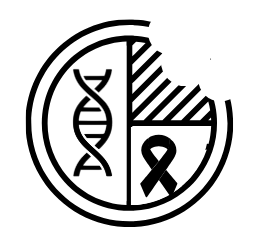Reading time: 4 minutes
Eoghan McGrath
This history of life on earth is marked with competition for resources, species expansion, and mass extinction events. New research1 suggests that tumors have similar backstories, and that cells which form successful tumors are lone survivors amidst a graveyard of other failed cancer cells.
Barriers to Cancer Growth
We often think about cancer cells as aggressive invaders of their local environment, outgrowing normal cells and consuming their resources. While this is true at later stages of the disease, cancer cells must overcome a variety of barriers to get to this point2.
For instance, cells are programmed to naturally self-destruct after a certain number of cell divisions (known as the Hayflick limit). Furthermore, built-in signaling pathways trigger cell death at the first sign of malignancy. Outside the cell, immune system sentinels are constantly on the prowl, ready to identify and destroy fledgling tumor cells.
Even if cancer cells manage to overcome these obstacles, they may still face competition from another underappreciated source: other cancer cells.
Despite it being an important topic, little is known about the early development of cancer cells. Advances in our understanding of this topic could lead to new treatments for cancer at its early stages.
Why a Lone Survivor?
We know from evolutionary biology that up to 99% of Earth’s species have gone extinct. This raises many interesting questions:
· Which species died off?
· Why did they die off?
· Why did others survive?
Researchers at the Istituti di Ricovero e Cura a Carattere Scientifico (IRCSS) in Genoa, Italy, asked the same questions about cancer cells. They sought to investigate why some cancer cells die and others form tumors.
Methods: Jurassic Park for cancer cells
When studying cancer, scientists often take a retroactive approach, looking at active genes in an already formed tumor. This is a bit like how archaeologists study dinosaur fossils years after the development and extinction of this species. While a retroactive approach provides certain value, watching normal cells evolve into cancer cells in real time provides additional benefit. The researchers at IRCCS created an environment to watch cancer cells grow, compete for resources, and fight for survival – a Jurassic Park for cancer cells.
To be specific, the researchers tagged individual cells with unique genetic barcodes and an active oncogene which would transform them into cancer cells. When implanted into mice, these engineered cells formed glioblastoma-like tumors over time and the researchers were able to monitor the progress of each cancer cell via its unique barcode.
Thinning the Field
At the beginning of this experiment, every cell had the same opportunity to develop into a tumor. However, the researchers found that many of the clones quickly died off while others survived and multiplied. They speculated that this was caused by an early bottleneck effect or “biological gate” that only certain clones could overcome, perhaps by evading cell death mechanisms. However, this was not the whole story.
As the experiment continued, the researchers noticed that some clones were monopolizing the tumor mass, i.e., tumors tended to consist of only one cell type. This suggested that while many cells succumb to early barriers to growth, once tumors are established, tumor cells are still subjected to selective pressures. It appeared that cells were competing against each other for dominance, but what made some win and others lose?
Finding the secret weapon:
To determine what cellular signaling pathways were playing a role in cell-cell competition, the researchers performed RNA sequencing. This process provides a snapshot of which genes are activated in cells. The researchers identified a set of cellular pathways tied to a gene called Myc (pronounced Mick) as the secret weapon for cell dominance. The cells in homogenous tumors all expressed this gene. Myc signaling has been implicated in the progression of various cancers but had not previously been linked to cell-cell competition in this context3.
The researchers then analyzed tumors that were still heterogeneous (before mass extinction and domination of a single clone). Even at this intermediate stage, dominant clones within heterogeneous tumors all had active Myc signaling compared to the smaller clones.
The researchers then asked: what happens if we take Myc away? Will the clones still successfully compete? The answer was no. Without Myc, tumors still formed, but clonal dominance was lost. Myc was required for cancer cells to fight off competitors. Thus, the researchers corroborated their hypothesis for the role of Myc signaling in cell-cell competition in tumor development.
Conclusion:
Of course, this cutting-edge research only tells part of a much bigger story. Many cancer cells exhibit distinct heterogeneity throughout development and as fully developed tumours4. The researchers highlight that their work does not argue against this, but rather adds to our continuing understanding of tumor development. Their work constitutes another important step towards fully understanding cancer and developing new methods to lead to its extinction.
Edited by Mallory Kane
References:
1. Ceresa D, Alessandrini F, Lucchini S, et al. Early clonal extinction in glioblastoma progression revealed by genetic barcoding. Cancer Cell. 2023;41(8):1466-1479.e9. doi:10.1016/j.ccell.2023.07.001
2. Hanahan D. Hallmarks of Cancer: New Dimensions. Cancer Discov. 2022;12(1):31-46. doi:10.1158/2159-8290.CD-21-1059
3. Dhanasekaran R, Deutzmann A, Mahauad-Fernandez WD, Hansen AS, Gouw AM, Felsher DW. The MYC oncogene – the grand orchestrator of cancer growth and immune evasion. Nat Rev Clin Oncol. 2022;19(1):23-36. doi:10.1038/s41571-021-00549-2
4. Lawson DA, Kessenbrock K, Davis RT, Pervolarakis N, Werb Z. Tumour heterogeneity and metastasis at single-cell resolution. Nat Cell Biol. 2018;20(12):1349-1360. doi:10.1038/s41556-018-0236-7


Leave a comment